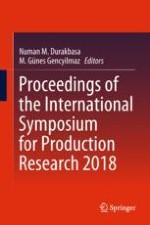2019 | OriginalPaper | Buchkapitel
Grey Forecasting Model for CO2 Emissions of Developed Countries
verfasst von : Asiye Özge Dengiz, Kumru Didem Atalay, Orhan Dengiz
Erschienen in: Proceedings of the International Symposium for Production Research 2018
Aktivieren Sie unsere intelligente Suche, um passende Fachinhalte oder Patente zu finden.
Wählen Sie Textabschnitte aus um mit Künstlicher Intelligenz passenden Patente zu finden. powered by
Markieren Sie Textabschnitte, um KI-gestützt weitere passende Inhalte zu finden. powered by
